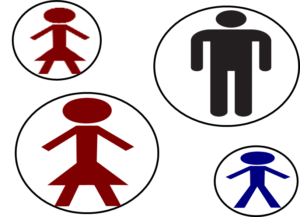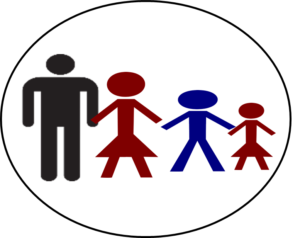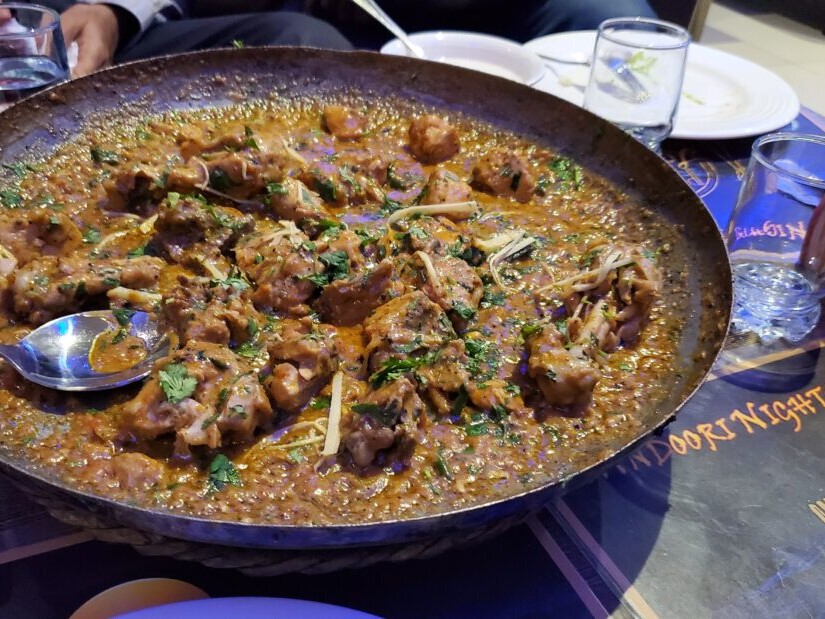Marriage and Culture
Weddings and Marriages
Have you ever attended a wedding that was not a celebration? Though weddings are very different from culture to culture, they are happy events, where everyone dresses up in fancy clothes and guests enjoy great food, dancing and music. Often the festivities go on for several days. But are weddings always celebrations?
Some say that the bride’s leaving her family is like a death. Or is it because the wedding marks the beginning of sadness for the bride? What happens after the wedding? Clearly, celebrations cannot continue indefinitely, but does the marriage continue with joy?
** How would you describe your parent’s marriage? Was their marriage a happy one?
** What are the blessings of getting married? What are the challenges in marriages?
** How would you describe your own marriage?
** What can the husband and wife do so that both look forward to their spouse coming home?
Traditional and Modern Families
I describe a traditional family as a large extended family that can include three generations, uncles and aunts, and multiple cousins. Traditional families are usually patriarchal, where the father rules the extended household. Marriages are normally formed from within the clan or tribal group and the newly-married couple moves in with the husband’s family. Everyone stays together. And the purpose of marriage is to procreate children so that the extended family can continue to grow.
In contrast to the traditional family is the modern or nuclear family which includes husband and wife, and a few children. The family lives on their own, apart from parents. The husband and wife may well have come from very different backgrounds and cultures.
As our world globalization continues and as migration patterns increase, especially the flow from East to West, many families struggle with expectations and differences between the traditional and modern cultures. Both cultures have positive characteristics, as well as negative features.
** In this group work, list 4 to 5 points for each category.
| Modern Family | Traditional Family | |
|
Positive Characteristics
|
|
|
|
Negative Characteristics
|
|
|
An Answer to the Traditional and Modern Crisis
We all grow up in a culture which shapes our lives, some in a traditional family society and some in a modern setting. Both cultures have positive and negative aspects that have shaped the way we think and act. As Christians we should continue the positive aspects of our culture of origin and make them even better. But we must learn to put aside the negative aspects in our cultures and change. (Please read the appendix, “An Overview of a Traditional and a Modern Family”.)
However, before we can change or move forward, we need to see where we are at now and where we want to go. When we travel somewhere, we often use Google maps to see our current location and destination. In order to change and become what God wants us to be, we must first look at our own “location” and how our culture has shaped us so we can better see where we need to change.
| This Photo by Unknown Author is licensed under CC BY |
I and Them
The first illustration describes the average family in a traditional culture. The husband spends most of his day outside the home, in his own world. The wife  and the children live in their world at home. The husband uses words like “I” and “them.” The wife knows very little of who the husband really is or what he does. Their lives are very separated from each other, and the husband communicates very little with her or the children. He may think to himself …
and the children live in their world at home. The husband uses words like “I” and “them.” The wife knows very little of who the husband really is or what he does. Their lives are very separated from each other, and the husband communicates very little with her or the children. He may think to himself …
“I am going to work. I do my business. I’ll meet my friends for tea and go home when I feel like it. There is no need for me to talk with my wife and discuss my plans with her. She has no need to know these things. My wife needs to trust me, honor me, and obey me.
This kind of life results in divided worlds. It is strange that while traditional families often experience healthy relationships as a whole, the husband and wife themselves do not. The husband is cold to his wife and wants to control her, demanding she serve him. This may lead to abuse and even fighting.
The wife lives in fear. What happens when she makes a mistake or asks too many questions? Though she had anticipated a happy marriage, her heart and dreams are broken. She feels left out and empty. She is lonely and wonders what her husband will be like when he comes home at the end of the day.
** In what ways is your home like a traditional family?
Me and Me
The second illustration shows a modern family. In the West, many women feel they have rights, and so, they want to enjoy their freedom. But this life also has problems. Everyone lives in his or her own world and is concerned about their own life with little time for others. They too live separated lives, often arguing and fighting as well. Children may come home to empty houses. Parents don’t know what their children are doing, who their friends are, or what they watch online. Here too is mistrust, separation, loneliness, selfishness, and often divorce.
** In what ways is your home like a modern family?
We Together
But note the third illustration. As followers of Jesus, we need to ask, “What does God want in a marriage?” In Scripture we will see that God has designed marriage to be a unit, where the husband and wife are one. In this marriage union, as the husband and wife care for and love each other, together they care for and love their children. They reflect God’s love to the world. Their marriage is a beautiful picture of God’s love. Whether we maintain traditional values or live in a modern setting, this kind of marriage is possible with God’s help.
Consider some of the good things in a traditional culture that we should continue and even do better, such as hospitality and respect for elders. From the modern world, we find good things such as respect, care for all, and equality. But can we put aside the negative features of our culture?
Note what Paul writes to the first generation believers in Asia Minor.
20 That, however, is not the way of life you learned 21 when you heard about Christ and were taught in him in accordance with the truth that is in Jesus. 22 You were taught, with regard to your former way of life, to put off your old self, which is being corrupted by its deceitful desires; 23 to be made new in the attitude of your minds; 24 and to put on the new self, created to be like God in true righteousness and holiness. 25 Therefore each of you must put off falsehood and speak truthfully to your neighbor, for we are all members of one body. … 29 Do not let any unwholesome talk come out of your mouths, but only what is helpful for building others up according to their needs, that it may benefit those who listen. 30 And do not grieve the Holy Spirit of God, with whom you were sealed for the day of redemption. 31 Get rid of all bitterness, rage, and anger, brawling, and slander, along with every form of malice. 32 Be kind and compassionate to one another, forgiving each other, just as in Christ God forgave you” (Ephesians 4:20-32)
If we are expected to live like this with other believers in the Christian community, how much more should we behave like this with our spouse!
** How can you make your home like a “WE” family?


